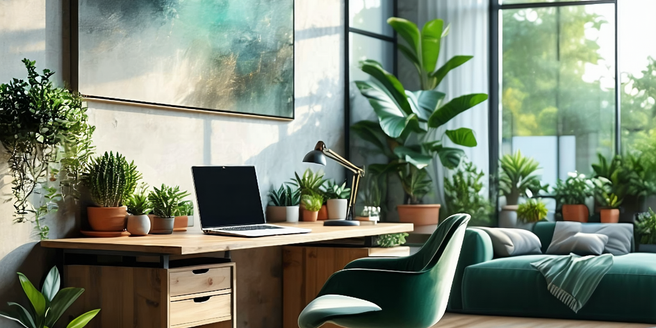
Creating a Dedicated Work Space
Creating a dedicated workspace is crucial for productivity, especially for parents juggling work and family responsibilities. The first step is to select a quiet area in your home that minimizes distractions and helps you stay focused. This could be a spare bedroom, a corner in the living room, or even a section of a hallway. Once you have chosen a spot, personalize it to make it inviting and conducive to work. Ensure your workspace has adequate lighting, and consider ergonomic furniture to maintain comfort during long work hours. Additionally, setting boundaries and communicating with family members about your work schedule can help create a professional environment at home. It’s important to establish routines that signal the start and end of your workday, helping you transition between work and family time.
Essential Furniture and Equipment
Outfitting your home office with the right furniture and equipment is essential for efficiency and comfort. Start with a sturdy desk that’s spacious enough for your computer, office supplies, and any necessary documents. An ergonomic chair is a must-have to support your posture during long work hours. Additionally, ensure your workspace includes adequate lighting, whether natural or through lamps, to reduce eye strain. Technology is another critical aspect; invest in reliable internet, a good-quality headset for virtual meetings, and a printer/scanner if necessary. Depending on your profession, you may also need specific tools or equipment, so assess your work requirements before making purchases. Keeping your workspace organized with shelves or desk organizers ensures everything you need is within reach, improving productivity and focus.
Storage Solutions for Office Supplies
Having effective storage solutions is key to maintaining an organized home office. Start by decluttering your workspace and identifying items you frequently use, which should be easily accessible. Use drawer organizers and desk trays to keep small items like pens, paperclips, and notepads neatly arranged. Labeling these storage areas can further streamline your search for supplies. Incorporating vertical storage, such as wall-mounted shelves or filing cabinets, maximizes space and keeps documents orderly. If possible, assign a specific area for each category of supplies to avoid clutter. Consider using magazine holders for paperwork or stackable bins for bulkier items. Regularly reassess your storage solutions to adapt to changing needs, ensuring your workspace remains tidy and conducive to productivity. This proactive approach prevents clutter from accumulating while enhancing functionality.
Balancing Family and Work Time
Balancing work and family time is a challenge many parents face, especially when working from home. Establishing a consistent schedule is critical, allowing you to allocate specific times for work and family. Communicate your work hours clearly with your family to minimize interruptions. Furthermore, prioritizing tasks can help you manage your workload more effectively, ensuring that you don’t find yourself working late into the night. It’s crucial to create quality family time by setting boundaries and disconnecting from work completely. Consider implementing rituals such as family dinners, game nights, or weekend outings to strengthen family bonds. Technology, like calendar apps and task managers, can help keep both work and family commitments in check. Remember, achieving a balance is an ongoing process that requires flexibility and adaptation as family needs evolve.
Incorporating Child-Friendly Features
Designing a home office with child-friendly features can make it easier to manage work-life balance as a parent. Begin by setting up a designated kids’ area within your office, providing them with a small table or desk and basic supplies for drawing or homework. This setup allows children to feel involved while you work. Opt for durable, easy-to-clean materials that can withstand the occasional spill or crayon mishap. Consider using child-proofing tools, such as outlet covers and cable organizers, to ensure your workspace is safe for little ones. Encouraging a routine where your child knows when it’s time to entertain themselves can minimize disruptions. Offering noise-canceling headphones for older children during virtual classes or quiet hours can create a harmonious environment, helping you maintain concentration and meet work deadlines effectively.
